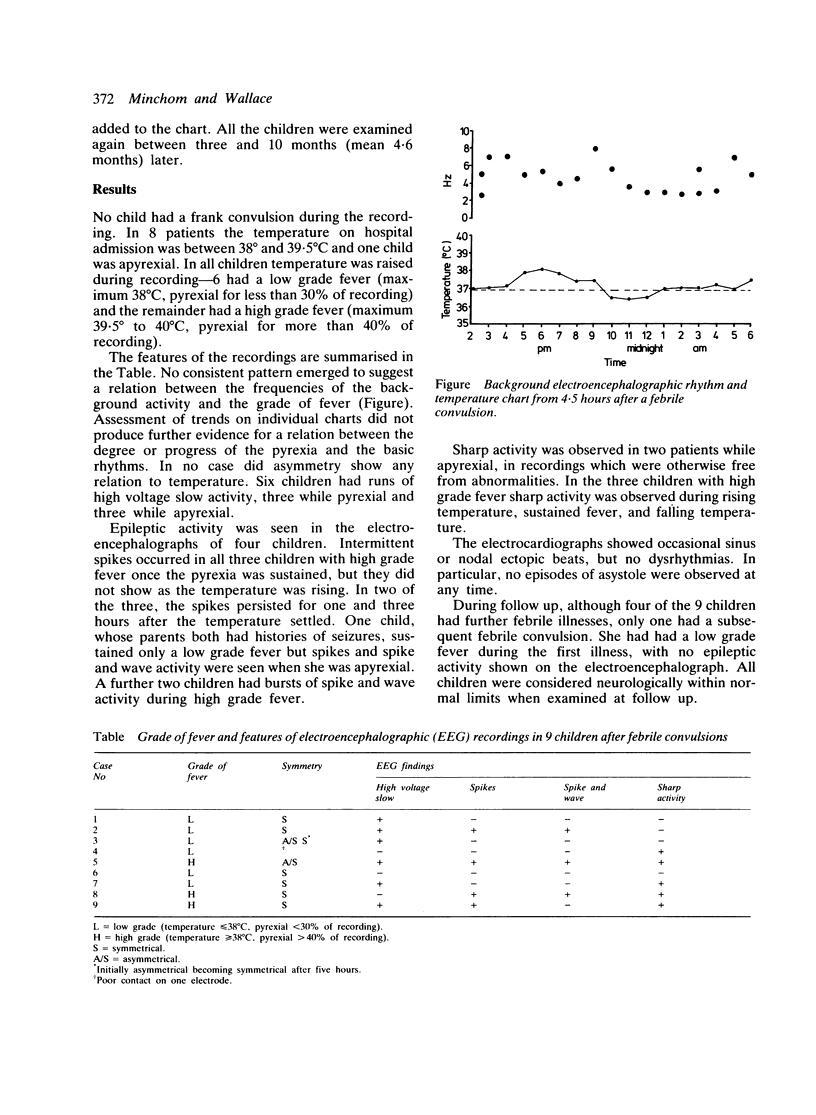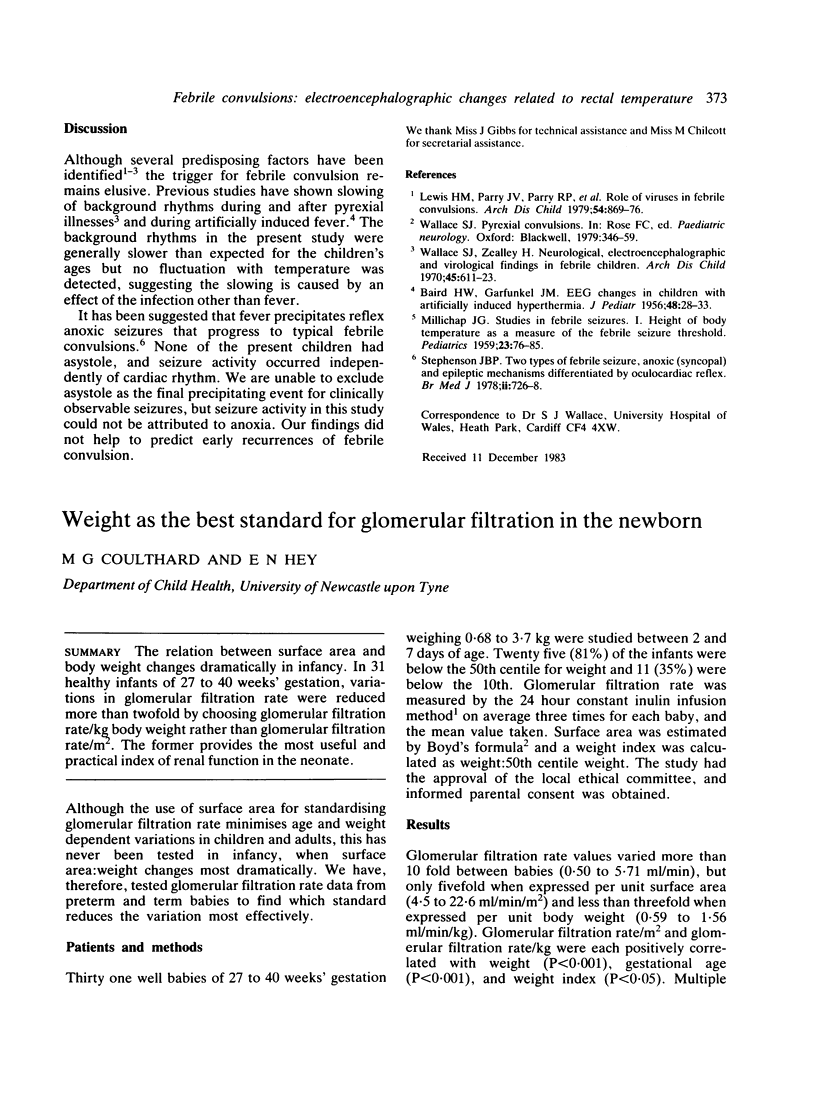Abstract
Nine children had simultaneous continuous electroencephalographic monitoring and temperature recording immediately after febrile convulsions. Background electroencephalographic rhythms did not alter with temperature and with one exception, seizure discharges occurred only during sustained high pyrexia.
Full text
PDF


Selected References
These references are in PubMed. This may not be the complete list of references from this article.
- BAIRD H. W., GARFUNKEL J. M. Electroencephalographic changes in children with artificially induced hyperthermia. J Pediatr. 1956 Jan;48(1):28–33. doi: 10.1016/s0022-3476(56)80113-3. [DOI] [PubMed] [Google Scholar]
- Lewis H. M., Parry J. V., Parry R. P., Davies H. A., Sanderson P. J., Tyrrell D. A., Valman H. B. Role of viruses in febrile convulsions. Arch Dis Child. 1979 Nov;54(11):869–876. doi: 10.1136/adc.54.11.869. [DOI] [PMC free article] [PubMed] [Google Scholar]
- MILLICHAP J. G. Studies in febrile seizures. I. Height of body temperature as a measure of the febrile-seizure threshold. Pediatrics. 1959 Jan;23(1 Pt 1):76–85. [PubMed] [Google Scholar]
- Stephenson J. B. Two types of febrile seizure: anoxic (syncopal) and epileptic mechanisms differentiated by oculocardiac reflex. Br Med J. 1978 Sep 9;2(6139):726–728. doi: 10.1136/bmj.2.6139.726. [DOI] [PMC free article] [PubMed] [Google Scholar]


